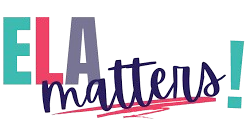How many times has a student responded with “I don’t like reading” when you introduce independent reading or reading in general?
This has been one of the biggest hurdles when I have attempted to bring independent reading into my classroom. Even after spending hours reading YA novels to be in the know and have oodles of recommendations, I have many students who still wouldn’t read.
Last year, it became even more of a struggle. We juggled asynchronous learning, online learning, hybrid learning, and a disconnect from students.
Our freshmen were the most difficult of the crew. We learned quickly that many did not have the stamina to read a book alone at home. In addition, many did not have easy access to books for a variety of reasons. Between the COVID craziness and the lack of access to novels, we started to brainstorm alternative options.
The Why
The biggest question non-educators have asked me is why I put so much effort into helping my students find joy in reading. There are so many reasons!
I have found in my classroom, that offering independent reading makes students more confident about reading and helps them find their reading niche in a safe environment. I allow students to try books and put them down if they don’t like them. It also helps students find their preferred topics and ways to read.
Many students have found that by using audiobooks, they can read and understand more, buthaved not been given the chance to try it out. This is a big deal for students who do not qualify for an IEP or 504 plan because they do not always get the opportunity to try this reading style out.
Sure, not all students love to read. I do not want to force reading on students. I do not want to make them hate it more. However, I do want to encourage them to try a variety of ways to take in information because no matter what their post-grad plans are, they will need to read a variety of text types and write to communicate. I want students to become strong communicators and readers of the world.
This mentality is what brought me to the idea of a choice board for independent reading.
The How
I had seen choice boards work in elementary and middle school settings but had not seen them applied well in high school English classrooms. I decided to take a stab at it and created a choice board for independent reading. It gives students the choice to read a book and complete a reading journal or to complete a certain number of journal entries using the choice board with reading, listening, and watching options. The options can include reading the news, reading short stories, listening to podcasts, or watching CNN10 (who doesn’t love Carl Azuz?).
Suddenly students were taking in news, poetry, short stories, and podcasts like free candy on Halloween night. They had a choice in what they were focusing on and our students who struggled with finishing a novel were able to complete the assignment by the end of the quarter. In addition, they were writing clear and solid paragraphs in response to the text that they took in.
Does this sound like something that could be a hit in your class? Click here to check out a freebie example of a choice board that I use in my class! Create a copy of it and make it your own by adding podcasts and reading options that resonate with your students!

